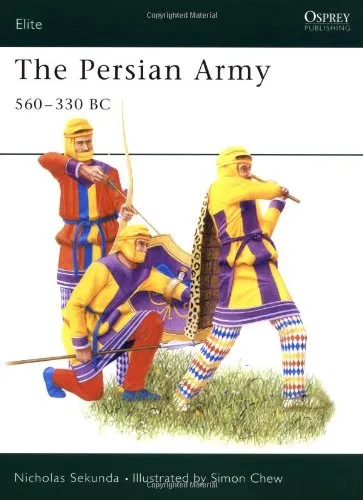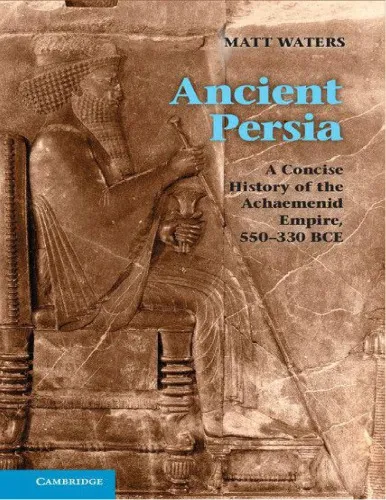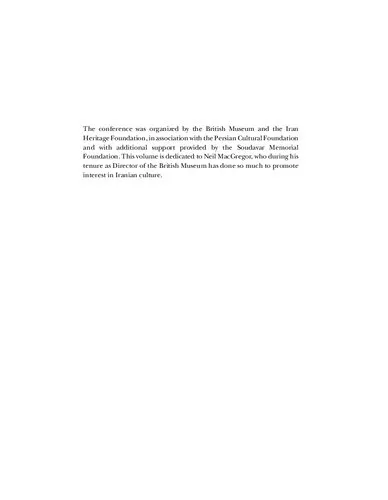The Persian Army 560-330 BC
4.0
Reviews from our users

You Can Ask your questions from this book's AI after Login
Each download or ask from book AI costs 2 points. To earn more free points, please visit the Points Guide Page and complete some valuable actions.Related Refrences:
Introduction
"The Persian Army 560-330 BC" by Nicholas Sekunda and Simon Chew is a captivating exploration into the military might of one of the ancient world's most formidable empires. This book unravels the intricacies of the Persian army's structure, strategies, and the historical context that shaped its development during the Achaemenid Empire's zenith. Delving deeply into the army's composition and operations, it provides readers with a comprehensive understanding of its influence on both Persian and global history.
Detailed Summary of the Book
Covering the expansive period from 560 to 330 BC, this book embarks on a meticulous journey through the military history of the Persian Empire, starting with the reign of Cyrus the Great. Cyrus's innovations in military organization paved the way for the successes of his successors. He laid the foundation of an army that integrated diverse cultures and fighting styles, a hallmark of Persian martial prowess. The book methodically examines the army's structure, highlighting the roles of elite units such as the Immortals and the cavalry, whose effective tactics were pivotal in numerous conquests.
The narrative advances chronologically, delving into the reigns of subsequent Persian rulers like Darius the Great and Xerxes I. It investigates critical battles including the famous engagements at Marathon, Thermopylae, Salamis, and ultimately, the Persian retreat from Greece. The book analyzes logistical aspects, such as supply lines and communications, exploring their role in sustaining the sprawling empire. By 330 BC, under the pressure of Alexander the Great's campaigns, the Persian army faced its ultimate challenges. The analysis of these encounters provides insight into the army's decline and the eventual fall of the Persian Empire.
Key Takeaways
- The Persian army was a complex organization that combined various ethnic groups and military traditions into a cohesive force.
- Persian military success was largely attributed to effective leadership, strategic innovations, and adaptability.
- While the Persian Empire boasted significant victories, its strategic overstretch and internal strife contributed to its downfall.
- The clash between Persian and Greek forces marked significant historical turning points, influencing Western and Eastern civilizations.
Famous Quotes from the Book
“The effectiveness of the Persian army lay not just in its size but in its blend of diversity and innovation that foreshadowed modern military strategies.”
“Through triumph and defeat, the Persian army remained a unifying force that defined an era of unprecedented empire building.”
Why This Book Matters
"The Persian Army 560-330 BC" is not merely a historical recount; it is a critical analysis of military strategy and organization in ancient times that reverberates with contemporary relevance. Understanding the Persian army's evolution offers valuable insights into the nature of military ingenuity and its role in empire building and world history. The book is a significant contribution to military history, providing scholars, history enthusiasts, and strategic thinkers with a detailed perspective on one of the ancient world's most effective fighting forces. Its exploration into cultural integration and military innovation delivers lessons transcending the confines of time, making it an essential read for anyone interested in the art of war and the rise and fall of great empires.
Free Direct Download
You Can Download this book after Login
Accessing books through legal platforms and public libraries not only supports the rights of authors and publishers but also contributes to the sustainability of reading culture. Before downloading, please take a moment to consider these options.
Find this book on other platforms:
WorldCat helps you find books in libraries worldwide.
See ratings, reviews, and discussions on Goodreads.
Find and buy rare or used books on AbeBooks.
1343
بازدید4.0
امتیاز50
نظر98%
رضایتReviews:
4.0
Based on 0 users review
"کیفیت چاپ عالی بود، خیلی راضیام"
Questions & Answers
Ask questions about this book or help others by answering
No questions yet. Be the first to ask!




